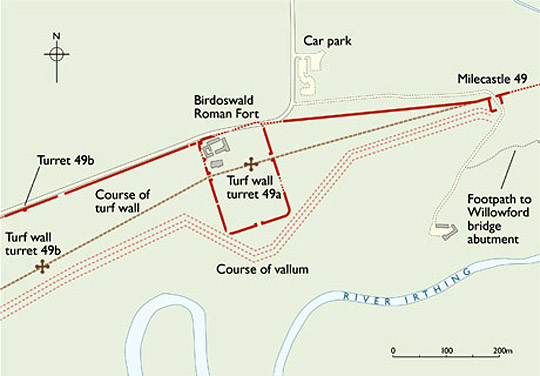Significance of Harrows Scar Milecastle and Wall
This stretch of Hadrian’s Wall has played a significant part in enabling archaeologists to work out the building sequence of the turf Wall sector, where the Wall was originally of turf and later rebuilt in stone.

Building Sequence
Investigations on this stretch of Hadrian’s Wall have revealed:
- the original turf Wall and its milecastle, discovered during 19th-century excavations designed to trace the turf Wall[1]
- the divergence of the stone Wall from the line of its turf predecessor
- the replacement of the turf Wall milecastle in stone
- on the stone Wall, the presence of ‘centurial’ stones in their original positions, marking the names of centurions in charge of the work parties building the Wall, and indicating the lengths of Wall for which individual work parties were responsible.
Later History
- The milecastle is notable for its reuse in post-Roman times.
- We know the name (Henry Tweddle) of one of the inhabitants of the house built within the milecastle.
READ MORE ABOUT HARROWS SCAR MILECASTLE AND WALL
Footnotes
1. F Haverfield, ‘Report of the Cumberland Excavation Committee, 1898’, Transactions of the Cumberland and Westmorland Antiquarian and Archaeological Society, old series, 15 (1899), 345–64 (accessed 21 March 2014); E Hodgson, ‘Notes on the excavations on the line of the Roman Wall in Cumberland, in 1898’, Transactions of the Cumberland and Westmorland Antiquarian and Archaeological Society, old series, 15 (1899), 365–76 (accessed 21 March 2014).